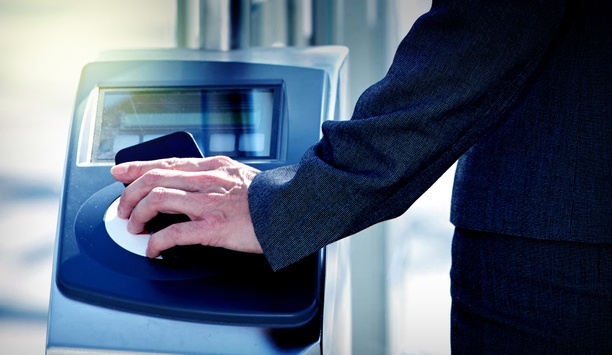Door access control - Expert commentary
After a lot of studying and getting ready for what seems like an endless stream of exams, teachers and students alike will enjoy having some much-needed time off — whether it’s just for a weekend, a break during the school year or the long summer holidays. Schools that are left empty for a sustained amount of time obviously increases the risk of arson attacks, thefts and vandalism. Staff members at an establishment should therefore work through this checklist before they leave the c...
Recent research shows most access control technology currently in use is not as secure or convenient as many security managers believe, according to day-to-day users of the system. In this HID Global white paper, you will discover what different companies look for in an access control system, why certain legacy access control systems may be vulnerable to attack, and why upgrading to a new access control system can result in huge benefit for enterprises and end users. Find out m...
Security and systems integrators across the nation are recommending and providing long-term security solutions to their customers. But when it comes to physical security entrances, integrators can easily fall into the trap of simply fulfilling an end user’s exact request without much pushback. Why? We believe the complexity and variety of entrances available makes it difficult to consult on the best solution, but also because there are a lot of assumptions at play. 1) Ask questions to d...
Recent developments in physical security systems have enabled us to expand access control using IT infrastructure. By eliminating the need for hard wiring to a central panel or controller, IP-based systems enable installations that are non-proprietary, flexible and scalable. This means not only a more versatile solution, but also a more cost-efficient one. A network-based system can be enlarged by one door, and one reader, at a time, unlike some traditional systems where controllers or panels o...
Securing potentially hazardous sites, which contain gas or oil storage facilities, is becoming increasingly important to UK industry. While other businesses are investing in enhanced access control solutions, such as electronic key-centric access management, many sites containing hazardous materials are left stuck in the dark ages, with basic and impractical mechanical locking systems. This is due to the potential risks associated with using an electronic device, which could cause a spark, in cl...
It seems schools still need to be alert when it comes to the risk of terrorism. Following a recent security threat, Bury College has set an example that schools across the UK need to be aware of the threat of terrorism. As reported by the Manchester Evening News, the incident at the Great Manchester college saw the facility being put in lockdown as a precaution before an evacuation took place. Hundreds of staff and students were caught up in the event. Bury College released a statement followin...
Since the introduction of smartphones with downloadable applications, vendors have been trying to replace the traditional plastic identification (ID) card with a mobile phone application. People might lose or misplace an ID card, but most people immediately recognise if they are without their mobile phone. Mobile ID badges for access control Bluetooth Low Energy iBeacon technology Technical challenges of mobile ID apps The logical extension is to replace or augment the traditional corpor...
In end-to-end security, it’s important to consider that the chain is only as strong as its weakest link. That is why it is essential that an access control system is always evaluated in its entirety, to discover where the weakest link can be found. It is not uncommon for access control systems to be installed and then used for the longest time possible without any attention to updating the system’s intrinsic security features. There are many systems in the field that are...
Mobile access is probably the largest emerging trend in the security marketplace, but it is only one of several that are changing the face of the access control market. Another factor showing potential to change the market is the emergence of location systems and positioning systems, as reflected by HID Global’s recent acquisition of Bluvision, a provider of real-time location tracking system for assets and employees, and building information modeling (BIM) is impacting how consultants do...
Security consultants are on the front lines of trends such as “smart buildings” and the increasing demand for green technologies. We recently gathered together several consultants to reflect on what’s new in these areas, joined by a representative of HID Global. Participants were Chris Grniet of Guidepost Solutions, Brandon Frazier of Elert & Associates, Terry Harless of Burns & McDonnell, and Harm Radstaak, HID Global’s Vice President and Managing Director, Phy...
The transition from analogue to IP technologies has had a large impact on the ways intercoms are used in the security industry. The analogue-to-IP transition has generated a lot of attention in the camera market, and the transition is also taking place for intercoms. Twenty years ago, Axis Communications (2N’s parent company) led the industry in converting from analogue cameras and video to IP. Integrated IP system The conversion took 15 years to achieve, but the same conversion in inter...
The security landscape continues to evolve in new and complex ways. This evolution brings change on many levels, which offers an opportunity for improvement rather than an interruption or a distraction. This concept has never been more important as you face today’s combination of new technologies, escalating security threats and the need to derive greater value from the access control infrastructure while solving increasingly complex system integration challenges. Upgrading from older,...
Part 4 in our Intercoms in Security Series The ONVIF standard makes it simple to integrate the intercom with other ONVIF-compliant video management systems, access control solutions, and cameras Open standards are enabling new capabilities in the intercom market, some of it driven by the transition to systems based on Internet protocol (IP). Today’s most-used phrase in the intercom business is interoperability, given that the intercom is integrated with solutions s...
Part 3 of our Intercoms in Security Series: Zenitel’s Call Access Panel manages intelligible critical communications through a security operations centre or control room Greater connectivity, security software enhancements, more customisation, and better sound quality are some of the enhancements driving the intercom market.An advantage now offered on Code Blue’s emergency speakerphones include self-diagnosing software that monitors the status of the phones an...
Part 1 in our Intercoms in Security Series Lambert-St. Louis International Airport uses Code Blue intercoms Organisations are demanding a new level of interoperability among mission-critical security systems. Intelligible audio, the ability to hear, be heard and be understood, is critical to communication, which is essential to the core security processes within an organisation, as well as to emergency situations. Intelligible audio provides a platform to optimise various...
Part 2 of our Intercoms in Security Series The 2N Helios IP family intercoms present a comprehensive portfolio of security offerings for businesses and individuals Some integrators and end users may think of intercoms as older technology that isn’t required as part of a robust security system. Not true. Intercoms include innovative technologies that have developed rapidly, keeping pace with other categories. Just as cameras and access control systems have made techn...
In early 2016, dialogue between ASIS International in Europe and HID Global around access technology identified the need to take a closer look at why sometimes cutting-edge technology is not as effective as it should be in real world applications. Central to the issue were security gaps caused when elements are combined that do not match the same level of sophistication. This resulted in ASIS conducting a study amongst its European members with HID Global providing support o...
The global market for card-based electronic access control (EAC) is projected to reach $10.1 billion by 2020 according to Global Industry Analysts. However, as credential technologies have evolved over the years, so have the ways users interact with them. Mobile credentials One of the bigger developments over the past few years has been the increased adoption of mobile credentials, which allows users to access facilities via their mobile device. To m...
Organisations are moving to align their physical and digital security initiatives, especially in today’s more connected world Organisations must address growing security threats using fewer resources in an increasingly challenging regulatory environment. They are looking to ensure data security while also protecting their facilities’ physical security. At the same time, their users are demanding more choices of smart cards, smartphones, wearables, and other mobile...
Smartphones offer a new alternative to traditional physical access control form factors such as smart cards or fobs. Convenience is the most obvious benefit, but there are others. Here are some advantages of using smart devices for access control: 1. Less vulnerability to cloning when compared to magstripe or low-frequency proximity cards. Digital credentials and mobile IDs are securely stored and protected. 2. Longer-distance communication, which allows readers to be mount...
Cultural and hospitality venues are attractive targets for terrorists due to their public accessibility Over the past 40 years there have been numerous attacks carried out against cultural and hospitality venues in the furtherance of religious, ideological, criminal or political beliefs. By default, cultural and hospitality venues are attractive targets for terrorists due to their public accessibility, the volumes of visitors and guests or because of what the venue represents;...
Customers are increasingly requesting both mechanical and electronic services for their doors In most buildings, security is a hybrid solution of both mechanical and electronic security products. Locksmiths take care of the mechanical door hardware and the integrators focus on the electronic security technology. However, for consumers, this traditional division of labour means they must deal with two different companies for the same door - one to design, install and service a...
Physical access control has been a key component of many organisations’ security strategies for several decades. Like any technology, access control has evolved over the years, and solutions now offer more security and convenience than ever before. From swipe technologies, such as the now antiquated magnetic stripe, to a variety of contactless technologies and mobile access credentials, businesses now have several choices when it comes to access control. Upgrading outd...
Predicting where or how security access trends would develop in 2016 was an educated guess at best. We did, however, forecast continued growth in the areas of wireless readers; smartphone usage as a credential; and more migration to web-based software/hardware solutions.In hindsight, we were not so far off the mark. Wireless security systems proved to be a growing option for extending an access control system and a practical solution for retrofits. Smart phone credentials gained popularity by fr...
After two decades of advances from simple visual ID badges to smart cards, standards-based access control systems and mobile ID solutions, the industry began entering its next new chapter in 2016. We began “mobilising” security to make it more pervasive and personalised, with a better user experience. We entered a new era of secure connected identities will not only make us safer but fuel innovation in how we work, shop and play. The industry began paying much closer attention to p...
The shift from wired to wireless access control was expected to gather pace in 2016—and that has happened. This year we at Assa Abloy surveyed a large cross-section of security professionals, seeking their insight into the changing market. Comparing our data with research we did in 2014 showed a clear trend towards wireless access control. Wireless access data Our 2014 survey found 23% of commercial properties using a wireless or hybrid wired/wireless access control s...
The winds of change have swept into the access control market in 2016. The hardware is transitioning away from being solely panel-based, software is rapidly moving to the cloud, and credentials are going mobile. It seems that the security access control world is finally waking up from its technological slumber, and 2017 will be an exciting time. These three major trends are feeding off one another and are driving the growth all around. IP and edge based systemsIn 2016, hardware companies like...
The security and safety industry has seen tremendous advances in cloud-based access control recently as cloud computing has opened up a world of possibilities for security and access control. Whether controlling access for a single door or for an entire enterprise spread out over multiple locations, cloud-based hosted or managed solutions allow security dealers and monitoring companies to provide end users with cost-effective, fully-functional turnkey solutions. The benefits are m...
The technologies behind physical access control are constantly evolving. It’s a fast-changing market that can leave end user organisations struggling to keep up. Smart cards still reign supreme, with good reason, but there are also new options today and on the horizon. Customers want to implement the most secure and up-to-date technologies, but constantly adapting their systems to keep up with the pace of change is impractical. Leveraging access control technologies in a way that both m...
Part 11 of our Security in Healthcare series The Joint Commission’s mission is to continuously improve health care for the public, in collaboration with other stakeholders Compliance with Joint Commission accreditation can impact hospital and healthcare safety and security decisions, and can even drive security system improvements at healthcare facilities. An independent, not-for-profit organisation, The Joint Commission accredits and certifies nearly 21...
Palm vein recognition
DownloadThe key to unlocking K12 school safety grants
DownloadSelecting the right network video recorder (NVR) for any vertical market
DownloadPhysical access control
DownloadCybersecurity for enterprise: The essential guide to protecting your business
Download















![[Download] House Of Smart Cards: How assumptions can open dangerous security gaps](https://www.sourcesecurity.com/img/news/612/hid-smart-access-920.jpg)
![[Download] The state of physical access control: Impact on the enterprise](https://www.sourcesecurity.com/img/news/612/hid-access-2017-920.jpg)




![[Download] The Evolution of Cards and Credentials in Physical Access](https://www.sourcesecurity.com/img/news/612/HID-whitepaper-Evolution of Cards and Credentials-920.jpg)












